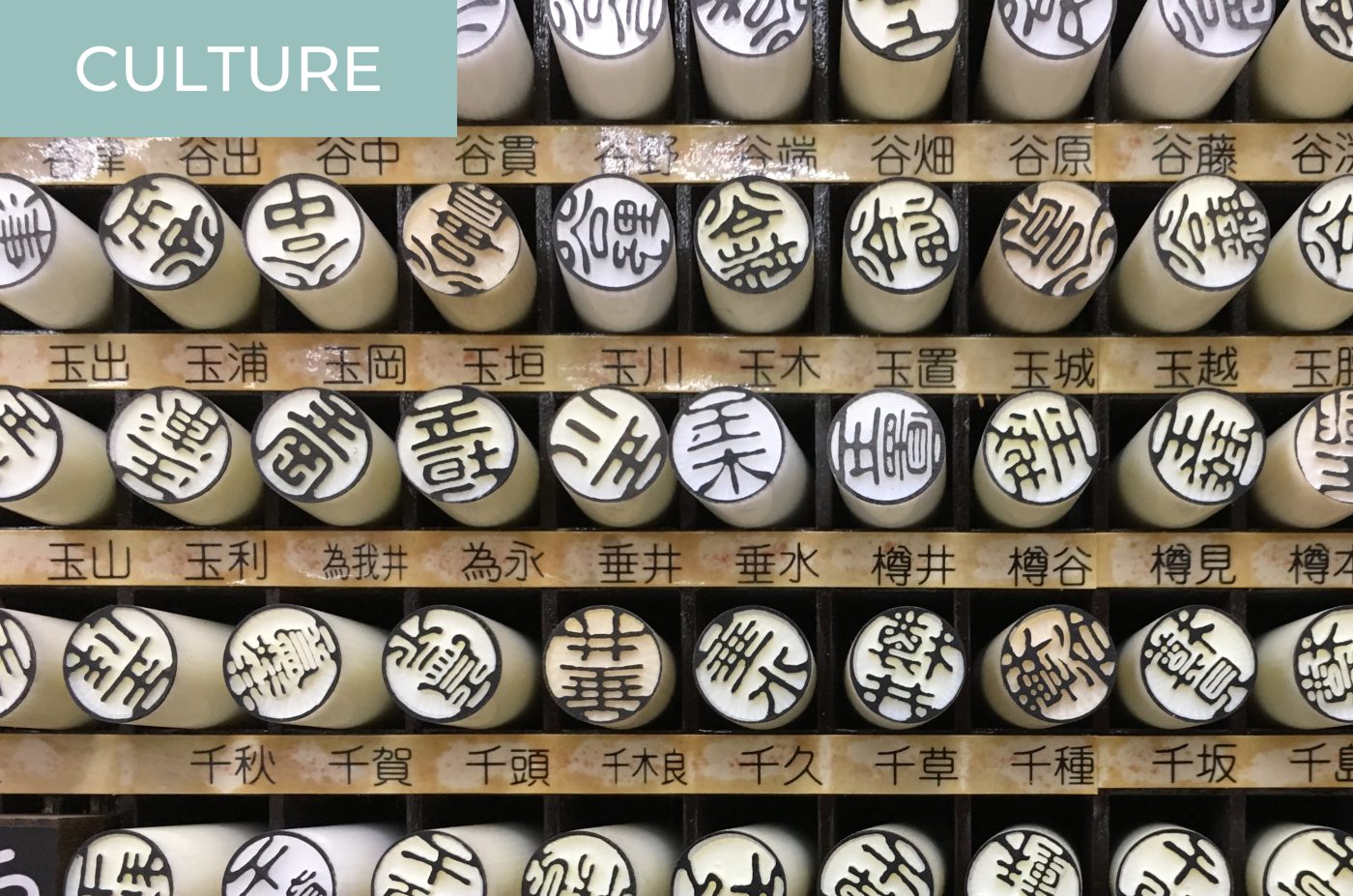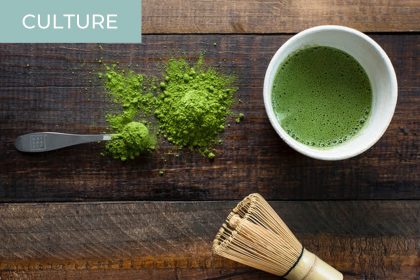Some time ago, we introduced the most popular Japanese first names and their meaning. But what about Japanese family names? Read along for an introduction to the most common family names in Japan, and a history of how family names evolved over time.
This article was kindly provided to Kokoro Media by our partner the German-Japanese Association in Munich (Deutsch-Japanische Gesellschaft (DJG) München) and was originally published in the association’s newsletter, Kaiho July/August 2021. Written by Martin Lutterjohann and translated from German to English by Jeanne-Rose Therre-Ohlig.
If you know a little Japanese, you can understand the meaning of the most common Japanese family names, and it only takes a relatively few kanjis to be able to read them. At least, that’s how it is for me. Whereas in Germany we have occupational names such as Bäcker (Baker), Bauer (Farmer), Meier (the second most common name if you consider all of its variants), Müller (Miller), Schmidt (the most common name if you consider all its spellings together), Schneider (Tailor), Schuster (Shoemaker), Zimmermann (Carpenter), in Japan it is mainly names that are connected with nature and rural surroundings.
The following terms serve as a base:
- fuji (藤, wisteria)
- hama (浜, seashore)
- hara /-bara/-wara (原, plain)
- hashi /-bashi (橋, bridge)
- hayashi /-bayashi (林, small forest)
- i (井, well)
- ike (池, pond)
- ishi (石, stone)
- iwa (岩, rock)
- awa /-gawa (川, river)
- ki (木, tree)
- matsu (松, pine tree)
- miya (宮, shrine)
- mizu (水, water)
- mori (森, forest)
- mura (村, village)
- no (野, field)
- numa (沼, swamp)
- oka (岡, hill)
- saka /-zaka (坂, slope)
- saki /-zaki (崎, small peninsula)
- sawa /-zawa (沢, mountain stream)
- shima (島, island)
- sugi (杉, japanese cedar)
- suzu (鈴, bell)
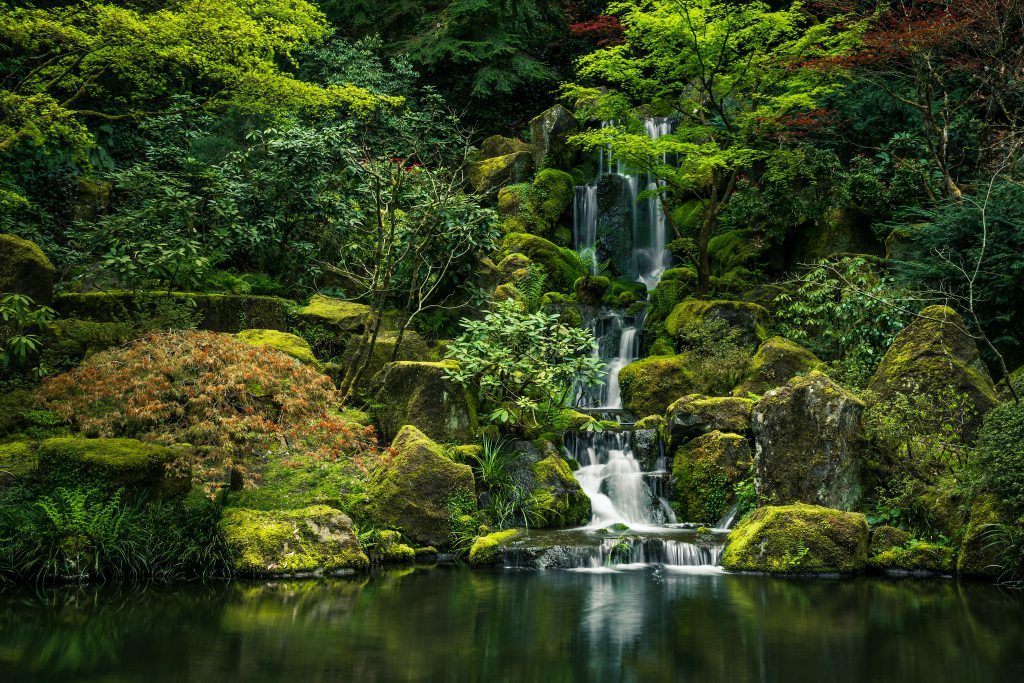
They can be combined with:
- Colors like ao (青, blue, green), kuro (黒, black)
- Characteristics such as furui (古い, old), hiroi (広い, wide), kiyo/shi- (清, clear), nagai (長い,lang), yoshi/kichi (吉, luck/happy)
- Directional indications such as kami/ue (上, above), shita/-shimo (下, below), mae (前, in front), uchi (内, inside/inside), soto (外, outside, outside), taka (高, high), ō- (大, big), ko- (こ, small); kuchi/-guchi (口, mouth, entrance), moto (本, origin, base), naka (中, middle, centre)
- Cardinal points: higashi/tō (東, east) kita/hoku (北, north) minami/nan, nam (南, south) nishi/sai (西, west)
They then form common surnames (namely 23 of the top 30 surnames):
- Suzuki (鈴木)
- Takahashi (高橋)
- Tanaka (田中)
- Yamamoto (山本)
- Nakamura (中村)
- Kobayashi (小林)
- Yoshida (吉田)
- Yamada (山田)
- Yamaguchi (山口)
- Matsumoto (松本)
- Inoue (井上)
- Kimura (木村)
- Hayashi (林)
- Shimizu (清水)
- Yamazaki (山崎)
- Ikeda (池田)
- Mori (森)
- Hashimoto (橋本)
- Yamashita (山下)
- Ishikawa (石川),
- Nakashima (中島)
- Maeda (前田),
- Fujita (藤田).
The most common name, Satō (佐藤), and the 6th most common, Itō (伊藤), still have the kanji for blue vine (see above) in their names, presumably in reference to the Fujiwara family (藤). With this small vocabulary, you can now independently read other familiar family names and guess and understand their meaning.
Family Names for All Only From the Meiji Period Onwards
In the German-speaking world, family names came into being around the 12th century, or at least as early as the Middle Ages. You will certainly be surprised to learn that family names only became obligatory for all Japanese citizens on 13 February 1875, i.e. during the Meiji period, whereby women initially had to retain their family name after marriage. It was not until 1896 that both spouses had to adopt the same name, usually the husband’s name. Since 1947, they have been able to decide which spouse’s family name they want to adopt.
It is hard to imagine that at the beginning of the Meiji period, after the end of the Edo period, practically all names were first abolished and only four remained: Fujiwara for the nobles, Minamoto for most of the former samurai, plus Taira and Tachibana. Of course, that didn’t work. At first, most people did not want to take family names at all because they feared disadvantages, e.g. taxes. Even the monks didn’t want any names because they felt they didn’t need any, until they were forced to by law in 1872.
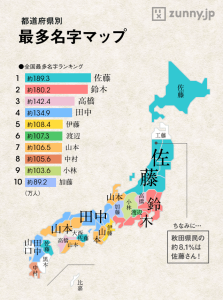
The names that citizens had to adopt from 1875 onwards were their choice. They made use of the names of well-known families, without any family ties, or of names of places. There are regional differences in the distribution of names. The most common names in Okinawa, such as Chinen (知念) or Shimabukuro (島袋), are practically non-existent in the rest of Japan, and vice versa.
Even if the most common Japanese names are more or less familiar to us, there are still a huge number of family names altogether. They are said to be around a hundred thousand, and if different spellings are taken into account, there are even 300,000 (in Germany, they are said to be up to 800,000).
To ensure that the freedom in the choice of kanji does not get out of hand, the number of permitted characters was limited to 843 kanji (人名用漢字, jinmeiyō kanji). However, a full 10% of the population has only ten names (see above), and the top 100 names account for a third of the population.
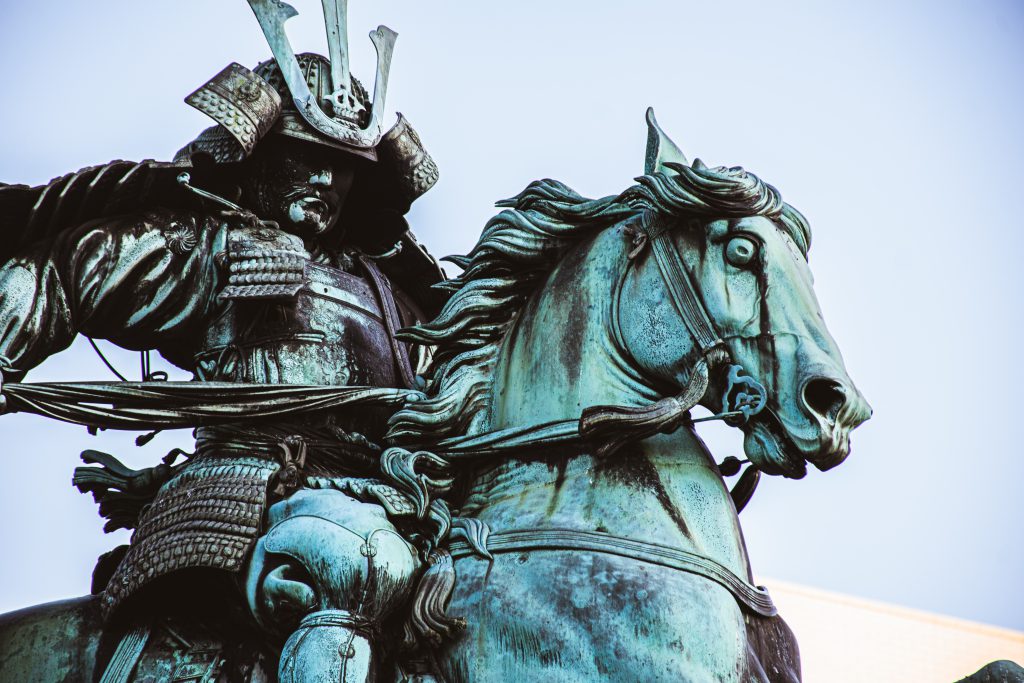
In the Edo period, all citizens were registered in local temples. Everyone had a name that included the place of residence, occupation, and first name, e.g. Goro Nagaya no Sempei, Sempei from the longhouse Goro. The samurai had four names: the name of their clan, a family name, an official nickname, and a first name. As in other countries of the region, they protected themselves against “evil spirits”, so to speak, by never using their real first name, but only their nickname. This custom came from China to Japan, but also in countries like Thailand, even today, people only use nicknames among themselves.
Development of Family Names
In the beginning, as in many archaic societies, there were clans (氏族, shizoku). For example, in the Yayoi period (300 B.C. to 300 C.E.), anyone who descended from a common ancestor or had married into the clan took the name of the clan (氏, uji). The leader of the clan was the uji no kami (氏の上), whose members were called ujibito (氏人). Subordinate groups had their own names.
In the subsequent Kofun period (250-538), small kingdoms emerged from powerful clans. The best known of these is Yamato in the area of today’s Nara Prefecture. Yamato formed the first small confederation of states. The clans were ranked according to their proximity to and loyalty to Yamato (as was also practiced later in a different form in the Tokugawa shogunate of the Edo period).
Each clan was given a name and a title of nobility (ujikabane-seido or shisei-seido 氏姓制度) by the emperor (Yamato’s ruler). The imperial family remains without a family name even today. The most loyal supporters of the Yamato clan were given the title omi (臣), and one level below that was the muraji (連). Among the families with the title omi we find well-known names like Abe (阿部), Hata (波多), Kasuga (春日), Soga (蘇我), Ishikawa (石川). Clans with the title muraji were, for example, the Mononobe (物部), Nakatomi (中臣).
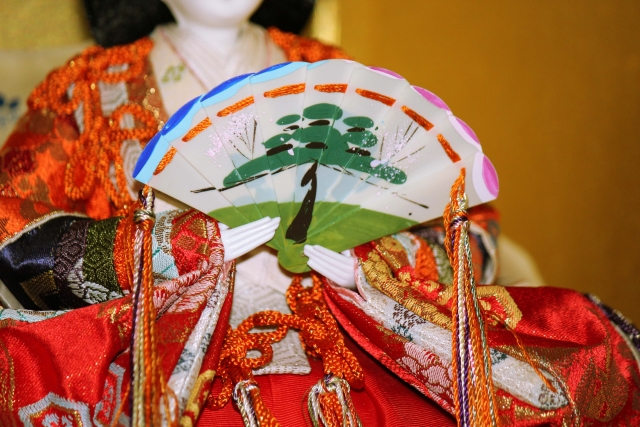
Below them ranked the clans that provided government officials. They were given the title Tomonomiyatsuko. Clans with this title were, for example, the Hata (秦) or Hattori (服部). The system was expanded under the eminent Prince Shotoku Taishi in 604 to the 12-level Kani-jûni-kai (冠位十二階) for positions in the imperial court, but during the Taika Reformation it was again simplified to and ōji (大氏) and kōji (小氏).
In 684, Emperor Tenmu created 8 new titles (Yakusa-no-Kabane (八色の姓)) for members of the imperial family and nobles, superimposed over the former clan ranks of omi and muraji, thus disempowering the clans. The common people, bemin (部民) were registered with the names and titles of their respective clans. Over time, however, the system proved outdated as individual families and status became more important than clan affiliation.
From the 10th century onwards, the dominance of a few family names emerged, including Fujiwara (藤原), Minamoto (源), Taira (平), Tachibana (橘), Ōe (大江), Nakahara (中原), Sakanoue (坂上), Ono (小野). The nobles continued to use their clan names for additional differentiation, the samurai families’ additional new names (naazana (名字)). At first, these were only used for one generation and called gō (号), later passed on to the next generation and thus retained. Often they were names of places or areas that the families ruled. If a name contained a no, this meant that the name was bestowed by the emperor, e.g. Minamoto-no-Yoritomo or Minamoto-no-Yoshitsune, to name two of the best-known representatives of the Minamoto clan, with Minamoto becoming the actual family name (Honsei (本姓)). Samurai thus had four names – as already mentioned.
The common people subsequently also adopted naazana, but this was forbidden to them in the Edo period (1603-1868). And so they were again left with only their first names – until 13 February 1875. Family names come before the first name, as they do in Bavaria, for example, Murakami Haruki, just like Huber Hermann in Germany.
First Names
First names are much less easy to read, as parents like to choose kanji with special meanings and the pronunciation of these characters is often not clear. However, there are some patterns:
Girls’ names very often end in -ko (子, child), e.g. Kimiko, Yuriko, Yukiko, also in –ka (花), Ayaka, Erika, -mi(美), Megumi, Naomi, also a boy’s name, -na (奈), Mina, Nana.
Boy names typically end in -rō (son), Ichirō, -ta (tall), Shōta, -o (man) Michio, -ichi, Kenichi, -ji (second or next) Kenji, Jirō (2nd son).
Sources:
www.tofugu.com/japan/history-of-japanese-names/
„Japanese Names“ Wikipedia,
Japan Reference: jref.com/articles/japanese-family-names.31http://Japan Reference: jref.com/articles/japanese-family-names.31//
Solution Familiennamen: Murakami, Uemura, Taniguchi, Takeuchi, Aoyama, Noguchi Uchiyama, Tanizaki, Nomura, Kurosawa, Ōsaka, kawakami

